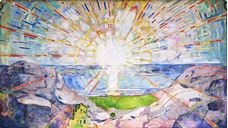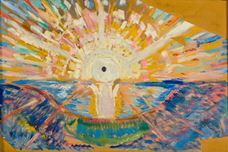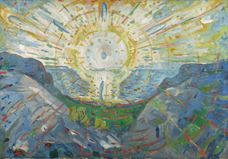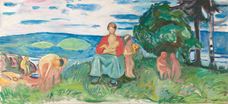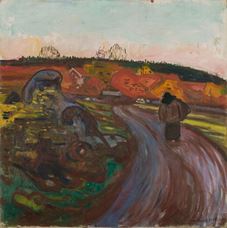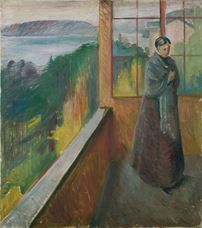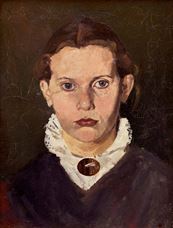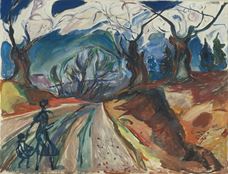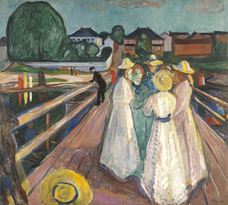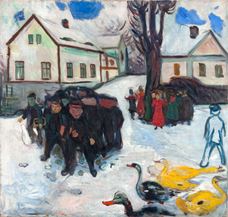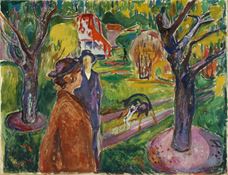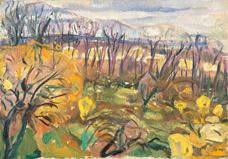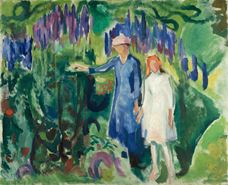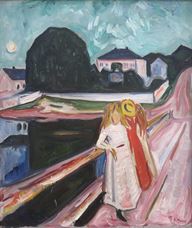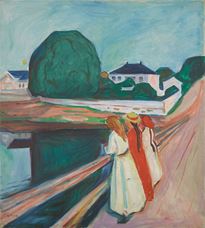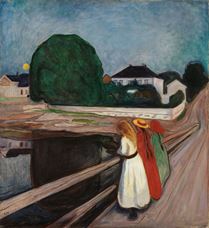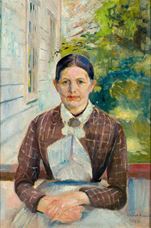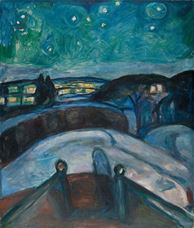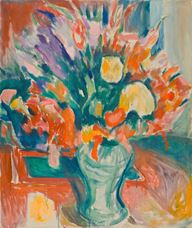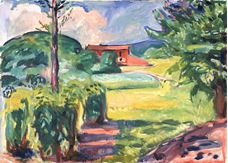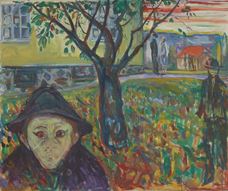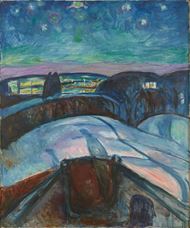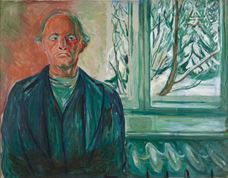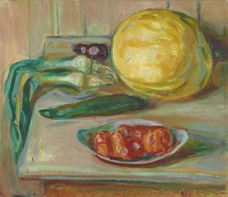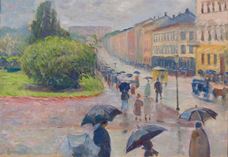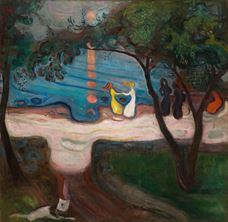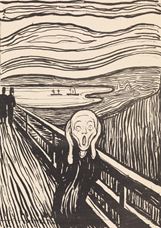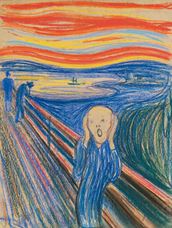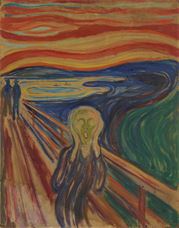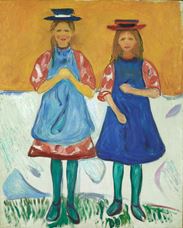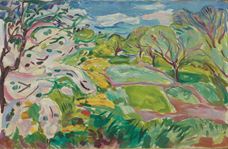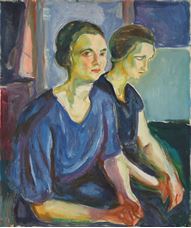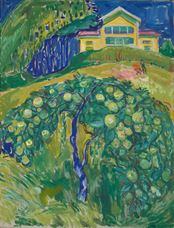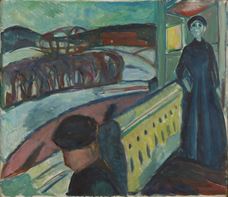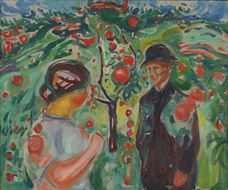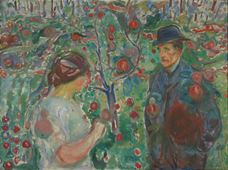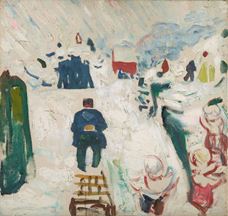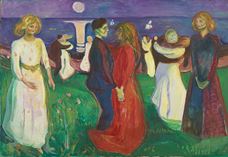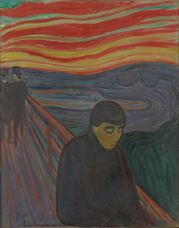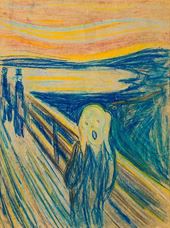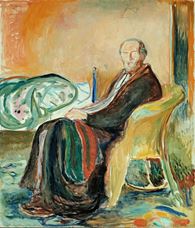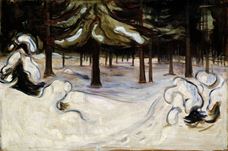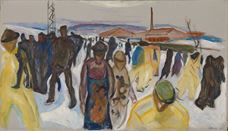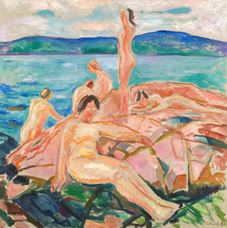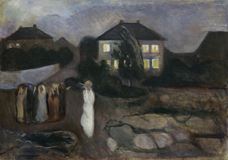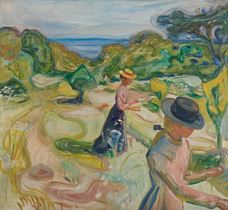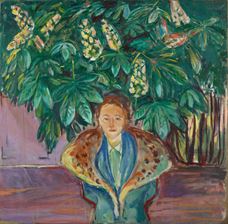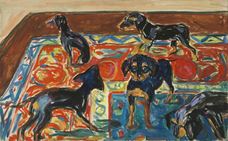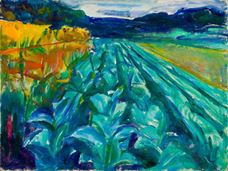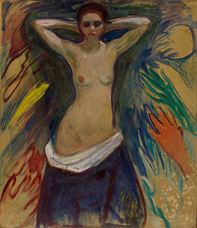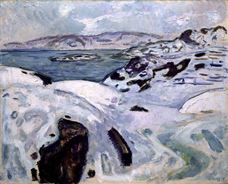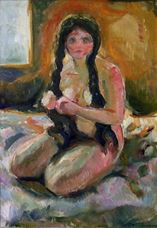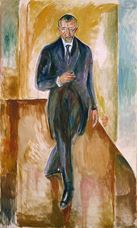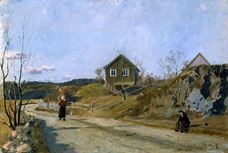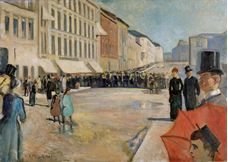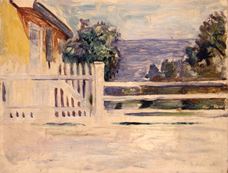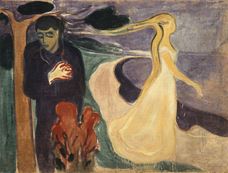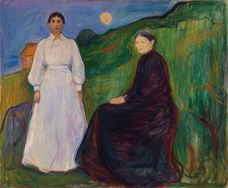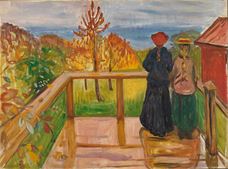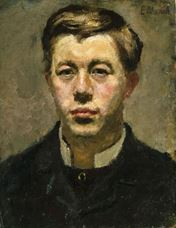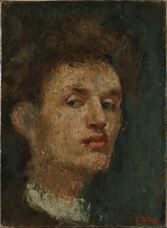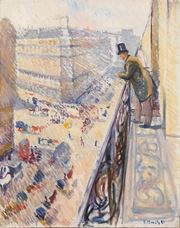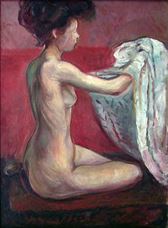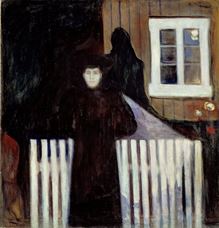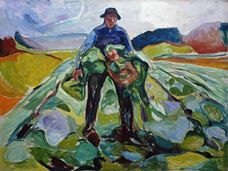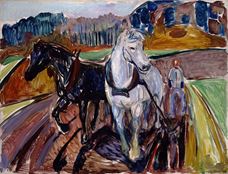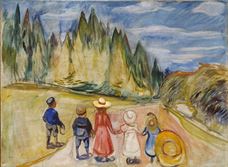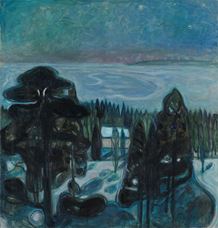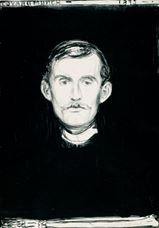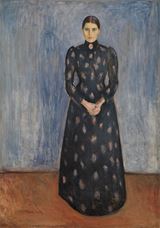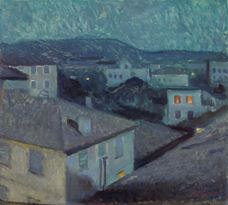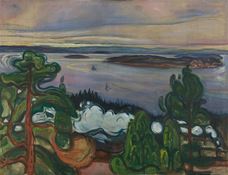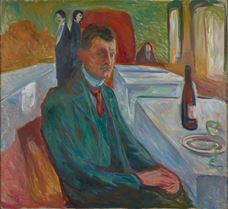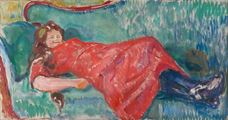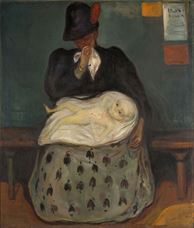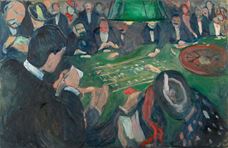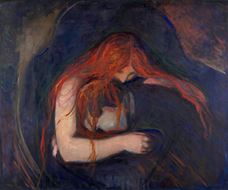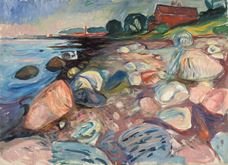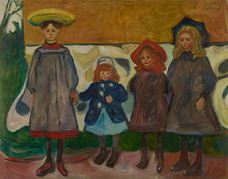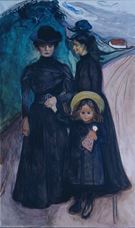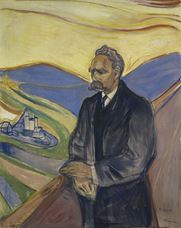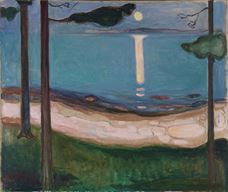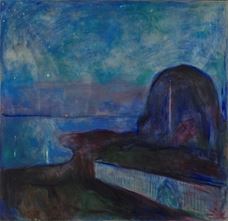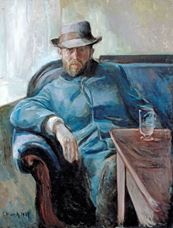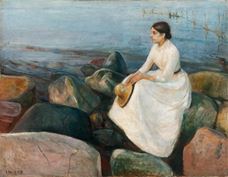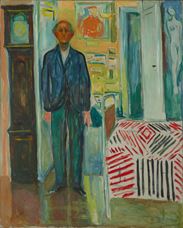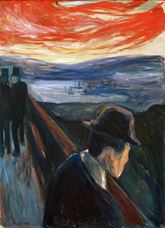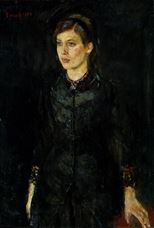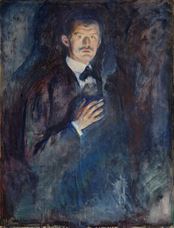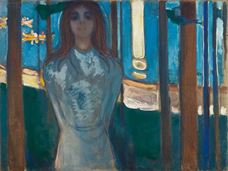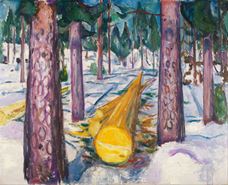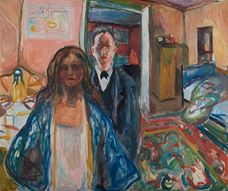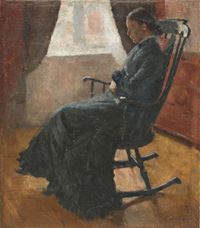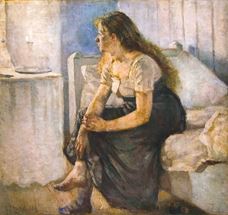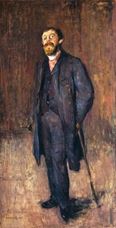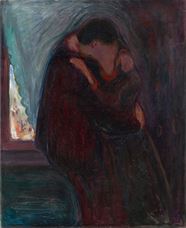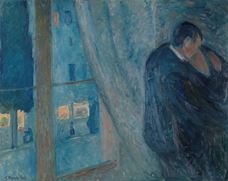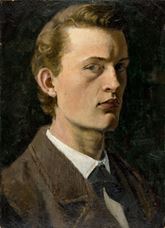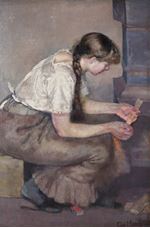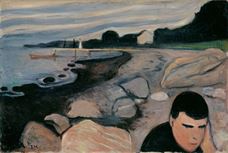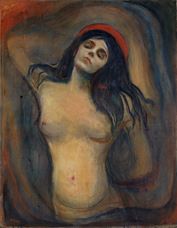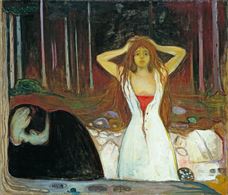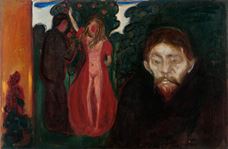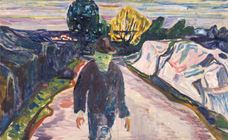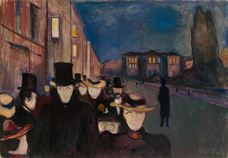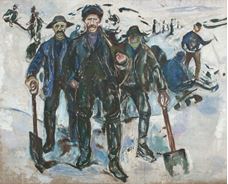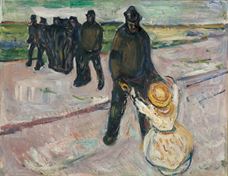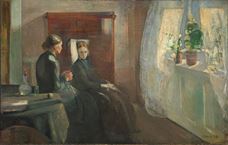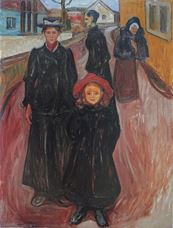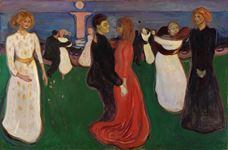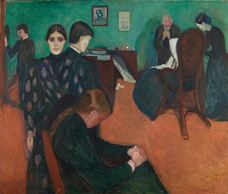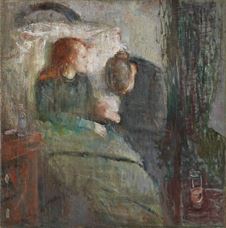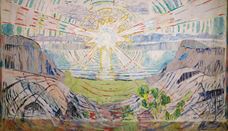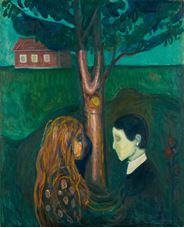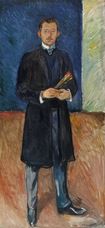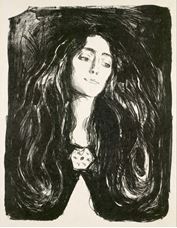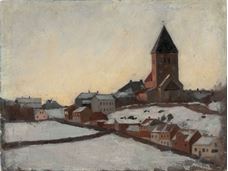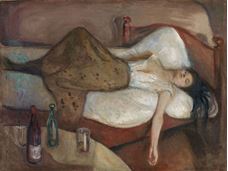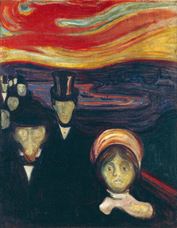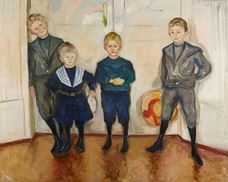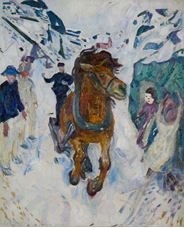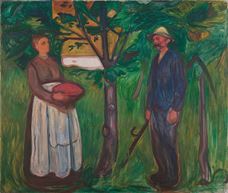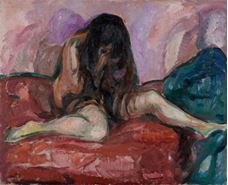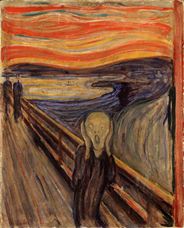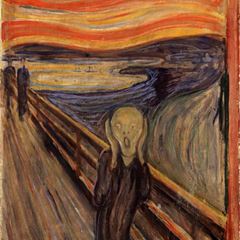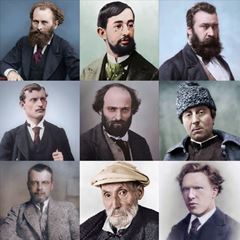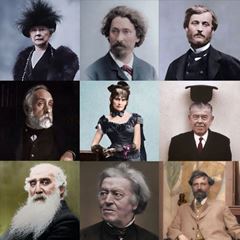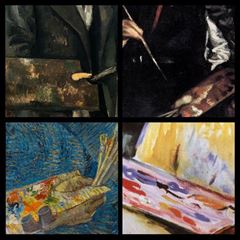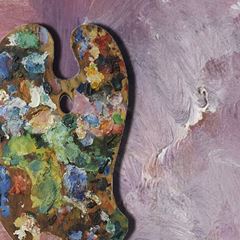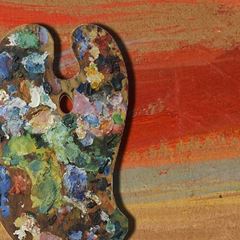On Tumblr.com, a user named "Paintters.co" colorized a lot of the black-white photos of world-famous painters. Examples of this photographic works...
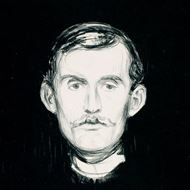
Edvard Munch
Edvard Munch was born on 12 December 1863 in Løten, Norway. He was the second and eldest son of Laura Catherine Bjølstad and military doctor, Christian Munch. When Edvard was a year old, the family moved to Christiania (now Oslo). When he was five years old, he lost his mother Laura Munch because of tuberculosis. The negative impact of this death on the family, especially to his father, was quite profound. Edvard's unhappiness when he met death at an early age was further folded by his father's sadness. But what struck him even deeper was the death of her 16-year-old sister Sophie, who was the eldest of all the siblings, because of tuberculosis. He was thirteen years old and had witnessed his sister's efforts to stay alive. Edvard would carry his helplessness and sadness to the paintings he made a few years later. Pictures such as "The Sick Child" and "Death in the Sick-Room" were expressions of the intense feelings he had felt throughout his life.
At the request of his father, Munch entered Christiana Technical College to study engineering. But after studying for a year, he left here due to his passion for painting. But after studying for a year, he left here due to his passion for painting. He decided to become a painter against his father's wishes and enrolled in the art institute in Norway. Christian Krohg, Frits Thaulow, and Erik Werenskiold, painters of the founders of a local school, whose weight is naturalism, opened the Autumn Exhibition in 1882. Munch adopted this group and took lessons from Krohg over the next few months, and learned about the use of color. However, he felt that he had to go abroad to get the training he needed.
In 1885 he went to Paris for the first time with the help of Frits Thaulow, who supported him, and a scholarship from several places. Thaulow, besides his spiritual and material support, also bought "Morning (Maid Girl)", one of his first achievements, dated in 1884. His journey to the French capital influenced Munch's work. He saw the works of the leading names of the period. He was admired by Van Gogh and Gauguin. He was followed by impressionists, art-impressionists and symbolists. Seeing the impressionist paintings has changed the direction of his art. In the words of Krohg, he returned as Norway's first and only impressionist. Munch continued to exhibit his works at the regular Autumn Exhibitions in Oslo but was depressed because of indifference to the 1887 exhibition.
In 1889, Munch opened his first solo show in Christania. His one hundred ten works took place in the exhibition. For a young artist, this was a huge success and had received both positive and negative reviews. This exhibition paved the way for a state scholarship and in October he had the chance to go to Paris again. In Paris, he started working in the studio of the portrait painter Léon Bonnat. He spent the summer in the town of Asgardstrand on the Norwegian coast, as he would do many times after that. In November, when he heard that his father had died suddenly, he had a psychological crisis and could not work for a while.
In 1890 his paintings were exhibited at the Autumn Exhibition in Norway, including "Spring Day On Karl Johan Street". In 1892 the Berlin Artists Association had invited Munch to exhibit his works. However, the exhibition, which included a group of his works, had not received any positive reviews and was closed by the organizers one week later. Other Norwegian artists, who took part in the exhibition which caused great controversy, withdrew their work. This scandal has perhaps made his more famous. He had many supporters among young artists. He had gone to Germany, at intervals until 1908.
Munch had returned to Norway in 1893 and began to work on his most famous work called "The Scream". The painting became part of the series known as Life Frieze, which he started in 1889. The aim of the series was to paint people who were breathing, feeling, suffering and loving. Munch worked on this series for years, rearranging each time and adding new images. The limits of the entire series had not been precisely defined, and the paintings that he took to the series had changed from the exhibition to the exhibition from year to year. Munch returned to the same subjects, doing it again with various techniques. This was his way of working. In the same year, he had an exhibition with the Berlin Secession and was selling to collectors in Munich and Dresden. In the same year, he had an exhibition with the Berlin Secession and could now sell to collectors in Munich and Dresden. In 1894, an anthology about the works of Munch was published, including writers such as Przybyszevvski, Servaes, Meyer-Graefe, and Pastor. These works were well received in Berlin, which he had not been considered before so that he started to feel more moral and good feelings in this city.
In 1896, he went again to Paris. This journey was very important for Emily Bernard, Maurice Denis and Mallarmé to meet symbolist poets. He exhibited some of his paintings from the Life Frieze series in Paris at Salon des Indépendants. He spent summers mostly in his little house in Asgardstrand, Norway. In 1898 he met Tulla Larsen. Tulla was always on Munch's beside, and she was never leaving him alone. Their relationship continued for several years with cuts. During this period, he was unable to work due to the fact that he was on the verge of a nervous breakdown. In the late 1899s, he had gone to a sanatorium and after a few months of treatment, he had moved to Berlin in search of a quiet life. His reputation spread and his financial situation were improving. He enlarged the series of life frieze and displayed it in 1902 at the Secession gallery. He had received positive reviews from the exhibition and was now considered the painter of the future.
The same year, although he wanted to end his relationship with Tulla, she would not leave him. Tulla called Munch with an excuse, threatened to commit suicide if he doesn't come. Munch went to Tulla. There were shot with a gun. it was unknown why and by whom. Munch's left hand was wounded in a way that wouldn't recovery. This was his last meeting with Tulla. In the paintings he made during the same period, Tulla was becoming either a murderer or a troublemaker.
In 1903 he went to Paris. Here he met the violinist Eva Mudocci. Mudocci had become the inspiration for a series of lithographs by Munch. He has held numerous exhibitions in Europe and the USA. This period was on the verge of alcoholism and under emotional stress, and he often fell ill. Despite his sensitive situation, Munch had begun to see the result of his work and struggle for many years. In 1905 in Dresden, he had been started to be seen and appreciated as the leader of the expressionist group called Die Brücke.
In 1908, while preparing an exhibition in Copenhagen, he fell for spiritual and physical exhaustion. He faced the danger of nervous breakdown caused by emotional turbulence and excessive alcohol. At his own accord in Copenhagen, he was treated in a clinic for several months. The duration of treatment was successful and Munch had fully recovered. He got out of the hospital in a good mood. The granting of the Royal Order of St. Olav by the Norwegian state had also contributed to his revival. He decided to settle in Norway. He bought a property on the Oslo fjord. He was living a simple life and inspired by the lives of those around him. This convalescence period was the turning point in Munch's life. His works were more sunny and moderate, but his anger and grief in his previous works had not completely disappeared.
The order given to decorate the new Great Hall of Christiana University became one of his important projects. The university was to celebrate its centennial anniversary in 1911. For this reason, prominent Scandinavian artists were invited to the mural competition for the new building. One of the successful project artists, Munch, began working at a time when he regained energy in the spring of 1909. The University accepted the paintings of Munch and the decoration was completed in 1916. He designed three huge oil paintings, while the smaller ones were decorative. The left panel was a giant study on History. The panel in the center took the subject from the sunrise, and the third panel, Alma Mater, highlighted the characteristics of benign women.
In 1912, Munch was invited to hold an exhibition with the Sonderbund art group in Cologne. The group's work was defined by the current of expressionism. An important and large exhibition was opened in Cologne with the participation of artists from Europe.
In 1916 Skoyen bought property in Ekely and lived there for the rest of his life. In 1921-1922 he painted murals for the canteen of the Freia Chocolate Factory in Oslo. He slowed down his work, due to an eye disorder he had spent in 1930. In the last period, his health gradually deteriorated. In 1933, he received French Legion d'Honneur and Grand Cross of Royal Norwegian Order of St Olav. With the rise of Nazism in Germany, his works were included in the category of ‘Degenerate Art’. The German forces' invasion of Norway in April 1940 was one of the bitter experiences of the painter's life. He died on January 23, 1944, at the age of eighty in Ekely.
Bibliography;
Ingles, E., (2015). Munch, Birinci Baskı, Yapı Kredi Yayınları, İstanbul.
Lunday, E., (2013). Büyük Sanatçıların Gizli Hayatları, Beşinci Baskı, Domingo Yayınevi, İstanbul.
Dickins, R., (2013). Ünlü Resimler, İkinci Baskı, Sıfıraltı Yayıncılık, Ankara. Cassou, J., (2006).
Sembolizm Sanat Ansiklopedisi, Dördüncü Basım, Remzi Kitabevi, İstanbul.
1863 He was born on 12 December in the town of Løten in Norway. He was Laura Catherine Bjølstad and the second child of Christian Munch, a military doctor. He was five brothers; Sophie, Andreas, Laura and Inger.
1864 His family moved to (Oslo's name in those years) Christiania.
1868 His mother died of tuberculosis at thirty years old.
1877 His sister Sophie died of tuberculosis at sixteen years old.
1879 He entered "Christiana Technical College" to study Engineering.
1880 He started painting. He received training from his teachers Hans Olaf Heyerdahl and Christian Krohg at Christiania.
1881 He took lessons from his teacher, Julius Middelthun, at the Royal School of Art and Design.
1884 Much's "The Morning (Servant girl)" painting, Frits Thaulow bought.
1885 He went to Paris for the first time. He came back when he described Krohg as Norway's first and only impressionist.
1886 He joined the Avangard "Christiania Bohemians" group.
1889 He opened his first solo exhibition. In October he went back to Paris. He started working with Léon Bonnat. Life began to make parts of Frizi. He spent the summer in the village of Asgadstrand on the Norwegian coast.
1890 He returned to Norway. His ten paintings were exhibited in the "Autumn Exhibition". Among the paintings exhibited there was also a "Evening on Karl Johan Street".
1892 He was invited to the exhibition at the Berlin Artists Association. He lived in Germany for sixteen years at intervals.
1893 He returned to Norway. He worked on "The Scream". He opened an exhibition with the Berlin Session.
1894 He started to engrave. An anthology was published in which Munch's writings were collected.
1895 He returned to Norway. In 1896 he went to Paris again. He exhibited his drawings of "The Frieze of Life" in "Salon des Indépendants". His brother Andreas died.
1898 He met Tulla Larsen.
1899 He went to a sanatorium in Norway.
1902 He exhibited his works in Berlin's Sezession gallery, next to Hodler and Kandinsky. These were the "The Frieze of Life" series. His relationship with Tulla Larsen is over.
1903 He met Eva Mudocci.
1908 He opened an exhibition in Copenhagen. He had a nervous breakdown and went to a clinic of her own accord. Norway received the Royal Order of St. Olav Knight.
1909 He recovered and returned to Norway.
1911-1916 He painted murals at the Great Hall of the University of Oslo.
1912 He participated in the Sonderbund exhibition in Cologne.
1913 He took part in an "Expressionist" exhibition in Berlin. His work has been exhibited at the Armory Show in New York.
1916 He bought property in Ekely at Skoyen and lived there for the rest of his life.
1921-1922 He made murals for the canteen of the Freia Chocolate Factory in Christiania.
1925 He was elected as an honorary member of the Bavarian Academy of Fine Arts. The name Christiania was renamed Oslo.
1926 Her sister, Laura, passed away.
1930 He slowed down his work due to an eye condition.
1933 He received the insignia of the French "Légion d'Honneur" and "Royal Cross of St. Olav" from the Norwegian Royal.
1935 His paintings were exhibited in New York.
1937 He went to Gothenburg. This was the last overseas trip.
1940 Norway was occupied by the Nazis.
1944 He passed away on January 23rd in Ekely.
The Scream - Edvard Munch
In 1893 Edvard Munch began working on his most famous work, "The Scream". The painting was part of a series called "Life Frieze", whose subject matter was life, love, death and the intense emotions they aroused. Munch worked for years on this series, rearranging each time and adding new paints.
Colorized Photos of Painters - Part II
On Tumblr.com, a user named "Paintters.co" colorized a lot of the black-white photos of world-famous painters. Examples of this photographic new works...
Pallet Self-Portraits of Painters
Self-portraits, which reflect the artist's appearance, personality and mood, bear the characteristics of the environment in which they are made and the environment in which the artist lives. Rembrandt, Van Gogh, Picasso, Munch and Otto Dix have made many self-portraits of famous painters. Each of these self-portraits used unique lines. The connection between the painters' palettes and paintings, the paint on the pallets reveal their personal style and techniques.
Edvard Munch: Brush Touches
In the early works of Edvard Munch, an introverted and pessimistic atmosphere prevailed. Although this atmosphere became sunny and moderate in recent years, anger and grief did not disappear completely. Munch, which keeps the spiritual and emotional issues at the forefront as a theme, details the paintings of his works called ”Weeping Nude”, "Madonna“ and “Death in the Patient Room" at different periods, color transitions and brush touches;
Edvard Munch: Brush Touches
Edvard Munch's "Galloping Horse", "Self-Portrait" and "The Scream" paintings with different periods, details in his work, color transitions and brush strokes;













